|
|
|
Publisert: 12.06.2022 | Oppdatert:
6.05.2025
Energy farming
- renewable energy sources in agricultural business and aquaculture

Msc, PhD
About how a farmer
or agro-industrialist can obtain energy for own needs, ensure running of
business without risks for crops and food production and for grain terminals
and production facilities and for sale of energy
Even with
the sharp drop in oil and gas prices observed in 2020, the profitability of
using green energy is 2-3 times higher! Moreover, if each
farmer uses his own capacities for energy production, this will destroy the
monopolism and corruption of large corporations, which is very good for the
economy!
See also:
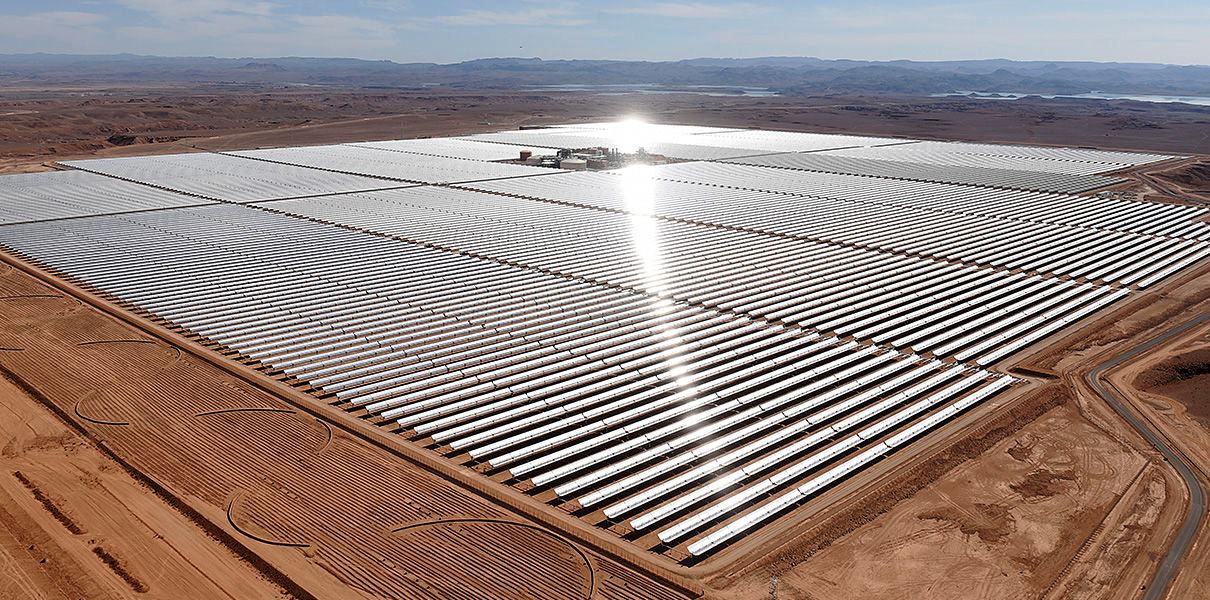
In a
situation where electricity are growing in price rapidly, and
every month more and more significant energy bills coming, even
the change of ordinary bulbs to LEDs at the enterprise can save
a significant amount and reduce the size of bills. Not to
mention the construction of its own power plant. In the photo -
a powerful power station in the desert of Morocco, with a
capacity of 22 MW, in 2018 the capacity reached 522 MW!
The second
factor, which is now actively stimulating the construction of
its own capacities for generating electricity and thermal
energy, is the constant blackout of electricity in the
harvesting season and gas in the winter. All rural residents
will probably agree with this. In many rural areas around the
World are power outages and if the power goes off, all the cars
stop, the engines turn off, the mobile phone connection
disappears, the computers go out and the water pumps turn off.
There is no electricity, there is no life...
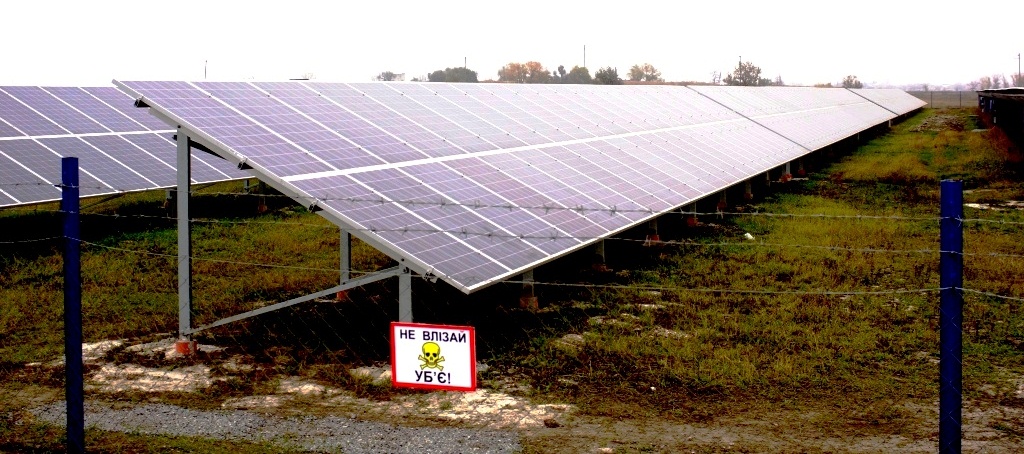
Solar
station near the Dnieper, Ukraine. The lands on which
this station was built are not suitable for farming, it is continuous sand
and swamp. These lands were empty and no one ever
tried to create and build anything on these lands in the entire history.
Now this station gives a very good profit to its owners
Therefore,
the availability of own heating capacities and possibilities for generating
electricity is very important in terms of energy security for businesses and
heating their families in winter. Previously, rural residents faced such
blackouts very rarely, but now it is a common thing.
Also now,
the state, thanks to the support of funds from the EU, is compensating for a
part of capital expenditures to increase energy efficiency. Plus, the green
tariff works for producers of green electricity.
Often,
electricity from one’s own power plant can be sold at a “green tariff”
rather than used for own needs, as it is more expensive for own consumption.
It is more profitable to sell, rather than consume for your own business and
lighting needs. If it is possible to build a solar or wind power plant, then
thanks to the "green" electricity tariffs for agricultural companies, it
will be more profitable to supply such energy to the network, and to consume
energy from traditional sources for own needs.
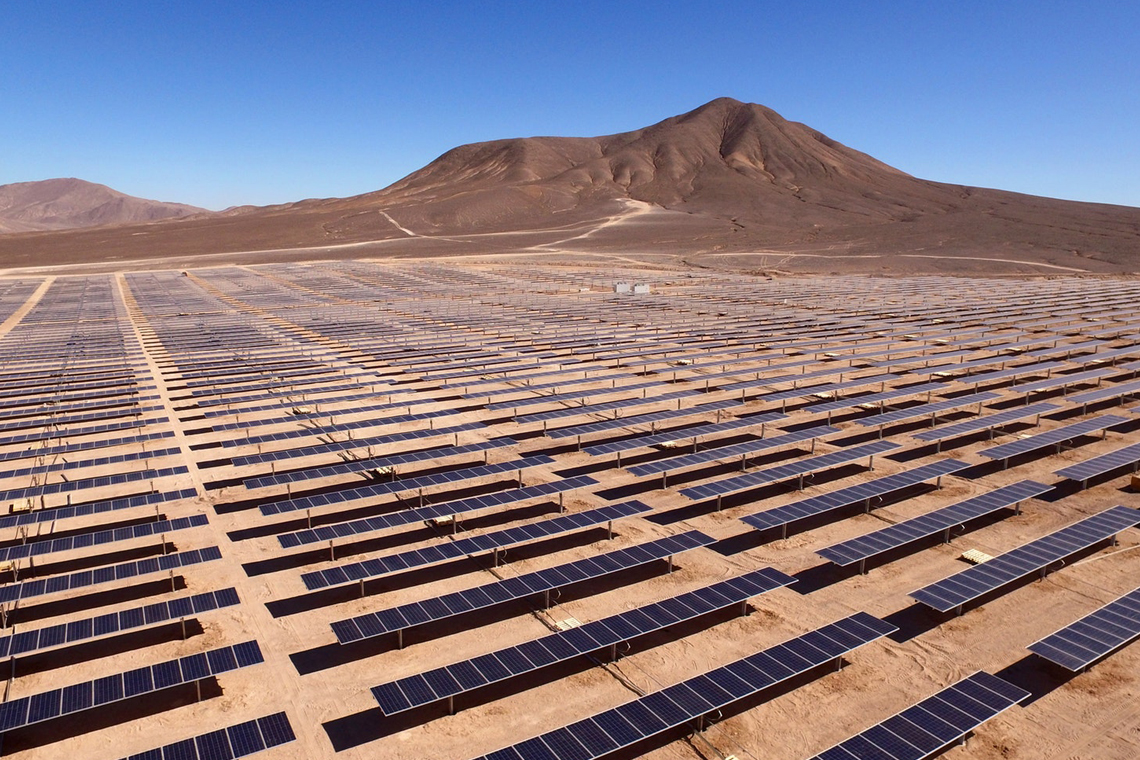
A big advantage of
solar power plants is that they can be built on land unsuitable for any
other business, such as in the desert
Not only in Europe, but
throughout the World, green energy is developing at a rapid pace, for
example, in the UK the number of people employed in the field of solar
energy has already exceeded the number of workers in the oil and gas
industry. This market will develop at an active pace, as evidenced by the
experience of the EU, where traditional sources of electricity based on the
combustion of coal and gas are already uncompetitive.
Solar power
The sun is a universal
and constant and the most affordable source of energy. In rural areas,
separate power plants are often built, and houses and farms are equipped
with solar panels.
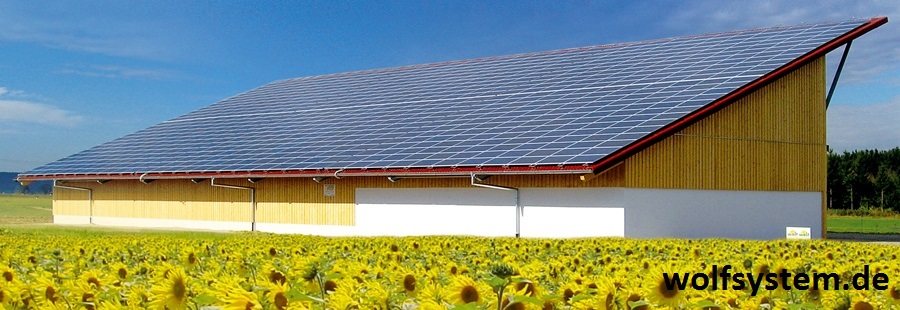
Now
it is quite possible to build a house, office or farm that will
fully provide itself with energy and at the expense of renewable /
"green" sources. In the photo - a farm equipped with solar panels
(Source: wolfsystem.de)
Also, solar
cells can be placed on the roofs of greenhouses - especially in the
southern regions, where such panels have a dual function -
generating energy and creating the necessary shading for plants.

Greenhouses
equipped with solar panels (KUBO) are no secret to anyone
In
agriculture, solar panels can be using in any place; now even barges
that transport grain along the river are equipped with solar panels.
There are also flexible panels with which you can cover
the silos of the elevators from the south side and receive energy.
Solar energy is
widely used in hard-to-reach areas and where there are interruptions
with centralized energy supply.

A
solar power station built in Ukraine to provide energy to grain terminal as
well as to profit from the sale of electricity at the "green" tariff.
Power 1.3 MW, stationary photocell mount systems
Solar panels
using for energy supply of water pumps and electric shepherds and
electric hedges on pastures and for industrial purposes or for
irrigation.

A small solar station that feeds a
solar-powered pump that pumps water for people or animals
to pasture on sunny
days
To provide
energy to a large enterprise, it is better to use a combination of a
solar or wind power station with industrial storage batteries, which
will provide power supply, even in the absence of receipt of the
required amounts of energy from the network and from solar panels
(at night and in bad weather) or wind generators (in calm weather).

Tesla storage batteries have a capacity of
10 kW / h (Powerwall on the right), they can be combined
into blocks for industrial purposes and they can be paired
with solar panels or wind generators or in the absence of
their own generators according to the charging scheme every
night at the lowest possible tariff
and
using battery power the rest of the day.
Left - Powerpack industrial storage
batteries
(Source: Tesla)
Of great importance it
is the possibility of obtaining additional income from a solar power plant.

In
order to prevent the land under the solar power plant from overgrowing
grass, you can run sheep or geese on its territory, which will pluck grass,
and thus, the need for financial costs to remove vegetation disappears and
you can get additional profit from growing livestock.
Also, experiments are being carried out to create
"two-tier systems": the 1st tier - crops production, the 2nd, upper tier -
solar panels
The efficiency and
quality of the panels (for example, good solar modules, have an efficiency
of about 14-25%), the use of panels that are not damaged by hail
(shockproof), such an angle of inclination and design that prevents snow
accumulation are also of great importance.

Cold
climate and snow in winter is not a problem for a solar power plant.
With the right design, snow rolls off the solar modules and does
not interfere with operation. Even in cold climates,
solar modules with high efficiency will be profitable for a long time.
Such power plants are being built even in Canada and Norway.
So a cold climate is not a problem
There are solar panels
with a transparent inner side, allowing the accumulation of reflected light
and other effective solar energy innovations.
It is also quite
inexpensive and efficient to supply conventional solar collectors to provide
hot water; there are special models with antifreeze that provide hot water
even in cold weather.

Solar
collectors, which are used to produce hot water, are even a much more common
option than solar panels. Such collectors can be
used to provide office, farm or grain terminal of hot water.
There are models that work even in winter
Use
of electric machines
Electric machines are the future of agriculture, but unfortunately,
in most cases now everything is limited only to concepts due to the
low productivity of such machines. The main
limiting factor is battery capacity. But
all the advantages can be seen right away - the tractor was charged
under a
solar
sunshade right
on the farm and go running to work in the field - very convenient.

Special canopies for charging cars, also with the
help of such sunshades you can charge Tesla industrial lithium
batteries and various electric cars

On the left is
the Fendt X-Concept 130 kW electric tractor introduced in 2013 at
the Agritechnica in Hanover. Also, electric loaders are now widely
represented on the market. On the right is the electric Land Rover
Defender (Electric Defender Research Vehicle), its potential is
impressive - with a fully charged battery, it can move slowly
off-road until 8:00 in a row :-) Such a machine copes with obstacles
even better than a conventional car due to high torque electric
motor at very low speeds, i.e. when crawling

One of the great
solutions for farmers,
agrarian business
and consulting is the use of electric pickups. By photo - Tesla
Cybertruck pickup that connimg soon!
(Source:
Tesla)
Wind energy
This is another method of generating
electricity. Many EU farmers invest in this type of energy and place
windmills on their land.
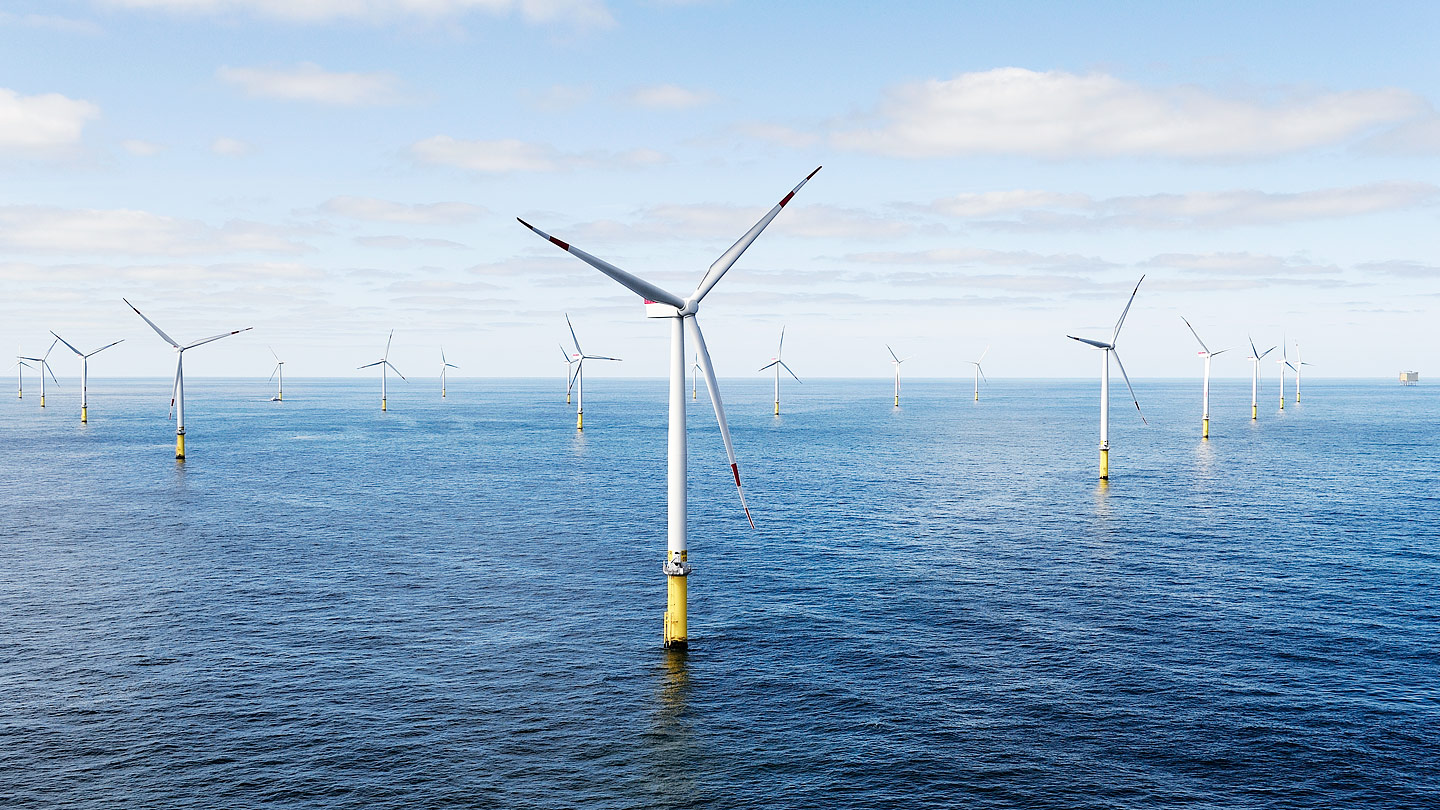
The
great advantage of wind farms is that they can be built at sea and other
places unsuitable for any other business

Wind farms are widely used by
farmers in Germany, Denmark, Norway, Netherlands and other EU countries.
Especially, it is beneficial if the farm lands are located on the coast or
in the zone of constant strong winds. Compared to solar power plants, wind
farms are more technologically sophisticated and more expensive facilities.
But they give more energy and more income, including at night and do not
occupy a large area, like solar power plants - this is especially true for
areas where the high cost of land. Modern installations have a capacity of
up to 7 MW, a wind generator of 10 MW can be purchased, and installations
with a capacity of up to 15-20 MW are being developed. For new wind energy
parks, the power of one installation of 6-7 MW is optimal (Source: Siemens)
Biomass energy
Theoretically, energy can be obtained from any plant-based dry raw material:
pellets, chopped straw and wood, etc. The determining factor here is that
the raw material must be chopped and dry so that it can be automatically fed
to the heat generator. By burning biomass, it is possible to produce
electricity and heat. Heat can be used to dry grain, including on an
industrial scale, even at large elevators and oil extraction plants.

Biomass is a good source of heat and energy. One kilogram of biomass
(pellets or wood chips), in terms of calorific value / energy capacity,
corresponds to approximately 1 m3 of natural gas. Even
preliminary calculations show that heating with resources such as pellets or
wood chips will be a much more profitable solution than heating with gas. On
the left photo - pellets from sunflower husk, on the right - chips from
energy willow
Biogas
This is a good source of heat and energy, in terms of its characteristics,
practically does not differ in any way from natural gas. Especially for
agricultural enterprises that are involved in animal husbandry, there are
double benefits, and concern for the environment and the complete
utilization of waste for profit obtaining. Roughly speaking - "money from
manure" :-)

Biogas station at a
dairy farm in the Chernihiv region, Ukraine. When planning the production of
energy from manure, biomass and other waste using a biogas plant, it is
especially good to approach investment planning - manure should not remain
on the farm. And you need to applicate manure as fertilizer only into the
soil with immediate incorporation. Engineering decisions should also be well
thought out during the planning phase of the farm. It is especially
important to take into account the need to insulate the entire manure
transport system and the biogas plant itself for cold climates
Other ways of
generating energy in agribusiness and methods for saving it:
-
water energy
-
geothermal energy
-
heat pumps
-
polyurethane
insulation and thermal insulation of buildings, grain dryers, elevators,
communications
-
energy efficiency
of machinery and equipment
-
LED lighting

Recently, prices of LED
have dropped significantly. That allows you to buy them for any farmer. With
today's electricity and LED prices, investment in LED lighting pays off in
2-3 months. It should only be taken into account that they are more
sensitive to voltage surges, therefore a guarantee for LEDs, protection
against voltage surges, grounding, backup systems and lightning protection
systems are mandatory. Changing ordinary bulbs to LEDs - halves the bill for
lighting in the very first month
Green energy in
aquaculture
In modern conditions,
solar energy is widely used in aquaculture and in irrigation
(for example, to feed pumps that supply water to reservoirs and provide
energy for compressors that aerate (saturate) oxygen with water. More often
they use wind and water energy (especially on trout farms that are fueled by
water from mountain streams).
But there are cases
when floating solar power plants are also used on lakes. In this case, water
productivity may decrease as solar panels take away some of the light needed
by algae and phytoplankton.
Often, solar panels are
placed on on the roofs of stationary water farms or RAS farms where
fish are grown in water tanks - in this case, this is a very good solution
that reduces risks and gives additional profit.

Sources of energy in
aquaculture. For aquaculture, the use of green energy is very important,
since so many farms are far from power lines and often the cost of creating
your own “green” power plant will be significantly less than the cost of
connecting traditional electricity. On the left is a water power plant in
China. At the same time, solar panels are placed on high supports, so more
light enters the surface of the water than when placing panels on pontoons.
On the right is a water pump with a solar panel, which is used at a water
farm in Kenya
Conclusions - when
people abandon the "old" technologies in favor of new ones, this marks
significant advantages for civilization as a whole. This time we have a
transition from gas and oil to more advanced sources of energy. Any farmer
or agro-industrialist should think about energy independence, the
possibility of earning money from investing in green energy and using the
green tariff, or just buy yourself a more energy-efficient tractor and save
a significant amount of fuel.
Contact us for consulting
and creation of profitable projects!
We guarantee the best
quality of services!
Disclaimer
© Agricultural Consulting Service. Technical
audit of agribusiness. Agricultural business projects and agricultural
companies turnkey. Consulting services for agriculture, aquaculture, natural
resources, environment, safe energy in industry and home construction.
Increasing the profitability of business, obtaining additional profits
|
|



















